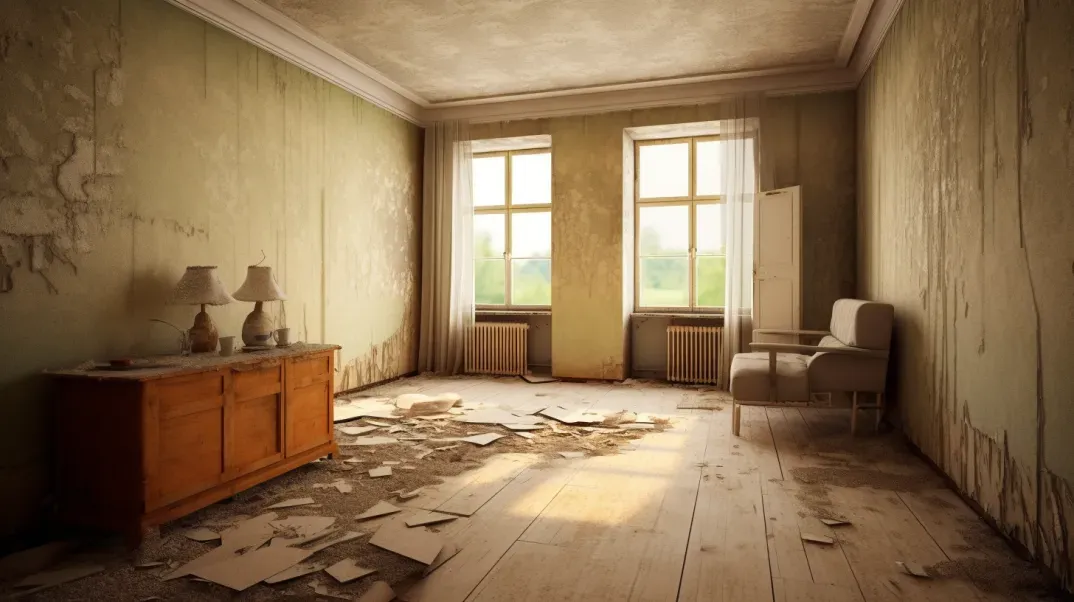Professional Mold Remediation vs. DIY: What You Need to Know
Mold in homes presents a significant, often underestimated challenge, posing risks that extend far beyond unsightly stains and musty odors. This pervasive problem can silently compromise both the structural integrity of a residence and the health of its occupants. In this blog, we delve into the multifaceted issues associated with mold growth in residential settings, offering insights into the hidden dangers lurking within our living spaces.
Mold thrives in environments where moisture and organic materials coexist, making homes with leaks, poor ventilation, or high humidity particularly vulnerable. The presence of mold can lead to a host of problems, from the gradual degradation of building materials to severe health repercussions for those living within its reach. Immediate effects such as allergic reactions and respiratory issues can escalate into chronic conditions if mold exposure continues unchecked.
Addressing mold in homes requires a proactive approach, encompassing both prevention and effective remediation. This blog will explore the various challenges homeowners face in combating mold, including identifying its presence, understanding the health risks, and implementing strategies to prevent its recurrence. By shedding light on these issues, we aim to equip homeowners with the knowledge necessary to protect their homes and their health from the insidious threat of mold.
Understanding Mold Remediation
What is Mold Remediation?
Definition and Distinction from Mold Removal:
Mold remediation is a thorough and comprehensive process designed to tackle mold infestations at their root, unlike simple mold removal, which often addresses only the surface appearance of mold. While mold removal focuses on cleaning visible mold from affected areas, remediation involves a more in-depth approach that targets the underlying causes of mold growth to prevent its recurrence.
Comprehensive Approach in Professional Remediation:
- Containment: The first step in professional remediation is to contain the mold to prevent it from spreading to other areas. This involves sealing off the affected area using plastic sheeting and creating negative air pressure to keep mold spores from escaping.
- Removal: Once containment is in place, professionals remove all mold-infested materials. This can include drywall, insulation, carpeting, and other porous materials that cannot be adequately cleaned. Non-porous surfaces are treated with specialized cleaning solutions.
- Cleaning: Thorough cleaning of the affected area is essential. This step involves using HEPA vacuums and air scrubbers to remove mold spores from the air and surfaces. Antimicrobial and antifungal treatments are also applied to eliminate any remaining mold spores.
- Prevention: Finally, addressing the root causes of mold growth is crucial to preventing its return. This includes fixing leaks, improving ventilation, and reducing humidity levels within the home. Professionals may also provide recommendations for ongoing maintenance and monitoring to ensure a mold-free environment.
Risks of Mold Exposure
Health Risks Associated with Mold Exposure:
Mold exposure poses significant health risks, particularly to sensitive groups such as children, the elderly, and individuals with respiratory conditions or weakened immune systems. Common health issues associated with mold exposure include:
- Allergic Reactions: Symptoms can range from mild, such as sneezing, runny nose, and itchy eyes, to more severe reactions like rashes and hives.
- Respiratory Problems: Mold spores can exacerbate asthma and cause respiratory issues such as coughing, wheezing, and shortness of breath. Prolonged exposure can lead to chronic respiratory conditions.
- Toxic Effects: Some molds produce mycotoxins, which can lead to severe health problems, including neurological symptoms and immune system suppression.
Structural Damage to Homes:
Beyond health concerns, mold can cause significant structural damage to homes. Mold feeds on organic materials such as wood, drywall, and insulation, leading to:
- Weakened Structural Integrity: Over time, mold can compromise the strength of these materials, potentially leading to structural failures and costly repairs.
- Cosmetic Damage: Mold can also cause discoloration and staining on walls, ceilings, and other surfaces, affecting the aesthetic value of the home.
- Decreased Property Value: Homes with mold problems are less appealing to potential buyers, leading to reduced property values and making it harder to sell.
Understanding the serious risks associated with mold exposure and structural damage underscores the importance of timely and effective mold remediation. By addressing mold issues comprehensively, homeowners can protect both their health and their property.
DIY Mold Removal
When is DIY Appropriate?
Guidelines for Identifying Suitable Situations:
DIY mold removal can be a viable option for small, localized mold problems that do not pose significant health risks. Here are some guidelines for determining when DIY methods are appropriate:
- Small Areas: If the mold covers less than 10 square feet, it is typically manageable for DIY efforts. Larger infestations should be handled by professionals to ensure thorough removal and safety.
- Non-Toxic Mold: DIY removal is suitable for common molds like Aspergillus and Cladosporium, which are less likely to produce harmful mycotoxins. If you suspect toxic mold, such as Stachybotrys (black mold), professional remediation is recommended.
- Accessible Locations: Mold in easily accessible areas, such as bathroom tiles, window sills, or small patches on walls, can be addressed with DIY methods. Hidden mold behind walls or under floors requires professional intervention.
Materials and Tools Needed for DIY Mold Removal:
To safely and effectively remove mold yourself, you will need the following materials and tools:
- Protective Gear: Wear gloves, goggles, and an N95 respirator to protect yourself from mold spores and cleaning agents.
- Cleaning Solutions: Use a mixture of water and detergent, or a commercial mold cleaner. For tougher mold, a solution of one cup of bleach to one gallon of water can be used, but ensure proper ventilation.
- Scrubbing Tools: Soft brushes or scrubbers to clean moldy surfaces.
- Disposable Rags or Paper Towels: For wiping and cleaning surfaces.
- HEPA Vacuum: A vacuum with a HEPA filter to capture mold spores.
- Plastic Sheeting and Tape: To seal off the affected area and prevent mold spores from spreading during cleaning.
- Fan or Dehumidifier: To dry the area thoroughly after cleaning to prevent mold from returning.
Limitations of DIY Mold Remediation
Challenges and Limitations:
While DIY mold removal can be effective for small infestations, it comes with several challenges and limitations:
- Incomplete Removal: DIY methods may not fully eradicate mold, especially if it has penetrated deeply into porous materials or spread to hidden areas. Incomplete removal can lead to regrowth.
- Lack of Proper Equipment: Professionals use specialized equipment like HEPA air scrubbers and advanced moisture detection tools that are often not available for DIY use.
- Inadequate Safety Measures: Without proper protective gear and containment measures, DIY efforts can expose individuals to harmful mold spores and cleaning chemicals.
Potential Risks of Incomplete Removal and Cross-Contamination:
- Health Risks: Incomplete removal can leave behind mold spores that continue to affect indoor air quality, posing ongoing health risks, particularly for sensitive individuals.
- Cross-Contamination: Without proper containment, mold spores can spread to other areas of the home during the cleaning process, leading to new infestations.
- Structural Damage: Failing to address the root cause of mold growth, such as leaks or high humidity, can result in ongoing structural damage to the home.
Understanding these limitations underscores the importance of knowing when to handle mold yourself and when to call in professionals. Proper assessment and precautions can help ensure that mold is effectively and safely removed, maintaining a healthy living environment.
Professional Mold Remediation
When to Call the Professionals
Scenarios Requiring Professional Mold Remediation:
Certain mold situations necessitate the expertise and equipment that only professionals can provide. Key scenarios include:
- Large Areas of Mold: If the mold infestation covers more than 10 square feet, it’s essential to call in professionals. Large-scale mold problems require comprehensive treatment that DIY methods cannot adequately address.
- Toxic Mold Types: The presence of toxic molds, such as Stachybotrys (black mold), poses significant health risks. Professional remediation is crucial to safely handle and remove these dangerous molds.
- Mold from Contaminated Water: Mold resulting from sewage or other contaminated water sources involves additional health hazards. Professionals are equipped to deal with these biohazard situations safely and effectively.
Benefits of Professional Expertise and Specialized Equipment:
- Expertise: Professionals have the training and experience to identify the type and extent of mold infestation accurately. They follow industry standards and best practices to ensure effective and safe remediation.
- Specialized Equipment: Professional mold remediation utilizes advanced tools and technology, such as HEPA air scrubbers, negative air machines, and industrial-strength dehumidifiers, which are not typically available for DIY projects. These tools are essential for thorough mold removal and prevention of cross-contamination.
What Professionals Offer
Detailed Description of the Professional Mold Remediation Process:
Professional mold remediation involves several key steps to ensure comprehensive treatment:
- Assessment and Inspection: Professionals begin with a detailed assessment to determine the scope of the infestation and identify moisture sources. This includes visual inspections and the use of moisture meters and infrared cameras.
- Containment: The affected area is isolated to prevent mold spores from spreading. This involves sealing off the area with plastic sheeting and maintaining negative air pressure.
- Air Filtration: HEPA air scrubbers and vacuums are used to remove mold spores from the air, improving indoor air quality and preventing the spread of spores.
- Mold Removal: Infested materials are carefully removed and disposed of following safety protocols. Non-porous surfaces are cleaned and treated with antimicrobial agents to eliminate mold spores.
- Cleaning and Sanitizing: The entire area is thoroughly cleaned and sanitized using specialized cleaning solutions and techniques to ensure all mold residues are removed.
- Restoration and Prevention: Finally, professionals address the underlying moisture issues, repairing leaks, improving ventilation, and implementing measures to prevent future mold growth. This may also include applying mold-resistant treatments to affected areas.
Overview of Advanced Technologies and Techniques:
- HEPA Vacuuming: High-Efficiency Particulate Air (HEPA) vacuums capture mold spores and fine dust, ensuring thorough cleaning of contaminated surfaces.
- Advanced Chemical Treatments: Professional-grade antimicrobial and antifungal treatments are used to kill mold spores and prevent regrowth. These treatments are more effective and longer-lasting than over-the-counter products.
- Infrared Cameras: Infrared thermography helps detect hidden moisture problems behind walls, ceilings, and floors, which are not visible to the naked eye. Identifying these issues is crucial for effective mold remediation.
Professionals bring a level of expertise, precision, and thoroughness that is critical for addressing significant mold problems effectively. Their use of advanced technologies and adherence to rigorous protocols ensures that mold is not only removed but also prevented from returning, safeguarding both health and property.
Making the Decision
Assessing Your Situation
Steps to Assess the Extent of Your Mold Problem:
- Identify the Signs: Look for visible signs of mold, such as discoloration on walls, ceilings, or floors, and musty odors. Pay particular attention to damp or humid areas like basements, bathrooms, and kitchens.
- Measure the Affected Area: Determine the size of the mold-infested area. If the mold covers more than 10 square feet, professional remediation is generally recommended.
- Check for Moisture Sources: Identify potential sources of moisture that could be contributing to mold growth. This includes leaks in roofs, pipes, windows, or areas with high humidity.
- Evaluate Health Symptoms: Consider any health symptoms experienced by household members, such as allergies, respiratory issues, or other mold-related symptoms. If these are present, it’s crucial to address the mold problem promptly.
Tips for Evaluating Your Ability to Handle Mold Removal:
- Assess Your Knowledge and Skills: Do you have the necessary knowledge and skills to safely and effectively remove mold? Understanding mold types, proper cleaning techniques, and safety precautions is essential.
- Consider the Tools and Equipment: Do you have access to the required tools and materials, such as protective gear, HEPA vacuums, and appropriate cleaning solutions?
- Evaluate Health Risks: If you or your family members have health conditions that could be aggravated by mold exposure, it may be safer to hire professionals.
- Time and Effort: Consider whether you have the time and energy to thoroughly address the mold problem, including ongoing prevention measures to ensure it doesn’t return.
Questions to Ask Professionals
Key Questions Homeowners Should Ask When Hiring a Mold Remediation Service:
- What is Your Experience and Expertise?: Ask about their experience in mold remediation, specifically with the type of mold and the extent of the infestation you are dealing with.
- Are You Licensed and Insured?: Ensure the company is properly licensed and insured to perform mold remediation services. This protects you from liability in case of accidents or damage during the process.
- What is Your Remediation Process?: Request a detailed explanation of the steps they will take to remediate the mold. This should include assessment, containment, removal, cleaning, and prevention.
- Do You Provide a Written Estimate?: Obtain a written estimate that outlines the costs associated with the remediation process. Ensure it includes all potential charges to avoid surprises later.
- Can You Provide References?: Ask for references from previous clients to gauge the quality of their work and customer satisfaction.
How to Verify Credentials and Ensure Quality Service:
- Check Certifications: Verify that the company holds certifications from reputable organizations, such as the Institute of Inspection, Cleaning, and Restoration Certification (IICRC) or the National Organization of Remediators and Mold Inspectors (NORMI).
- Review Online Ratings and Reviews: Look at online reviews and ratings on platforms like Google, Yelp, or the Better Business Bureau to see what past customers have to say about their services.
- Ask for a Detailed Contract: Ensure the contract includes all aspects of the job, such as timelines, specific services to be provided, and guarantees or warranties on the work performed.
- Follow Up on References: Contact the references provided to ask about their experience, the quality of work, and whether the remediation was effective and long-lasting.
Making an informed decision about mold remediation involves careful assessment and choosing the right professionals to ensure the problem is effectively resolved. This approach, inspired by the educational principles of the first document, empowers homeowners with the knowledge to protect their homes and health from the risks of mold.
Prevention Tips
Preventing Future Mold Growth
Effectively preventing mold growth requires proactive measures to control humidity, ensure proper ventilation, and conduct regular inspections. This section provides strategies and DIY tips to help homeowners keep their living spaces mold-free.
Strategies for Mold Prevention in Homes:
- Humidity Control:
- Maintain Optimal Humidity Levels: Keep indoor humidity between 30% and 50% using dehumidifiers, especially in damp areas like basements and bathrooms.
- Use Air Conditioners: Air conditioners can help reduce humidity levels during warm months.
- Monitor Humidity: Use hygrometers to monitor humidity levels in different areas of the home to ensure they remain within the optimal range.
- Proper Ventilation:
- Ventilation in High-Moisture Areas: Ensure kitchens, bathrooms, and laundry rooms have proper ventilation. Install and use exhaust fans that vent to the outside.
- Improve Airflow: Use ceiling fans and keep interior doors open to improve air circulation throughout the home.
- Vent Appliances Properly: Ensure that appliances like dryers and stoves are vented to the outside to prevent moisture buildup indoors.
- Regular Inspections:
- Check for Leaks: Regularly inspect roofs, windows, and plumbing for leaks. Address any issues promptly to prevent moisture buildup.
- Inspect for Mold: Conduct regular inspections for signs of mold in high-risk areas. Look for discoloration, musty odors, and water stains.
- Maintain Gutters: Keep gutters clean and ensure they direct water away from the house to prevent water seepage into the foundation.
DIY Preventative Measures Post-Cleanup:
- Use Mold-Resistant Products:
- Mold-Resistant Drywall and Paint: When renovating, use mold-resistant drywall and mold-inhibiting paints in areas prone to moisture.
- Anti-Mold Additives: Add anti-mold solutions to paints, primers, and adhesives to provide an extra layer of protection against mold growth.
- Address Moisture Immediately:
- Dry Wet Areas Promptly: Dry any wet areas within 24-48 hours to prevent mold from taking hold. This includes spills, leaks, and condensation.
- Fix Water Problems: Address and fix any sources of moisture immediately, whether it’s a leaking pipe, a damp basement, or condensation on windows.
- Improve Home Insulation:
- Insulate to Prevent Condensation: Properly insulate walls, roofs, and windows to prevent condensation and reduce the chances of mold growth in colder areas of the home.
- Clean and Maintain Regularly:
- Clean Regularly: Regularly clean areas prone to mold, such as bathrooms and kitchens, using mold-killing products.
- Use Mold Inhibitors: Apply mold inhibitors to vulnerable areas to prevent mold from growing back.
By implementing these strategies and DIY measures, homeowners can significantly reduce the risk of mold growth, ensuring a healthier and safer living environment. These preventative actions are part of an ongoing commitment to maintaining a mold-free home, aligning with the educational principles of thorough understanding and proactive engagement outlined in the first document.
FAQs
-
When is DIY mold removal suitable?
DIY mold removal is suitable for small areas (less than 10 square feet) of non-toxic mold, typically in easily accessible locations. For larger infestations or toxic mold, professional remediation is recommended.
-
What are DIY mold removal risks?
DIY mold removal risks include incomplete removal, potential exposure to harmful spores, and the possibility of spreading mold to other areas, leading to further contamination and health issues.
-
Why choose professional mold remediation?
For small, non-porous areas, clean with a solution of detergent and water. Do not use bleach indiscriminately; it can be ineffective on porous surfaces and may not kill mold roots, potentially worsening the situation.
-
What tools do professionals use?
Professionals use specialized tools like HEPA vacuums, air scrubbers, infrared cameras for moisture detection, and industrial-strength antimicrobial treatments to ensure comprehensive mold remediation.
-
How verify a remediation professional's credentials?
Verify credentials by checking for certifications from reputable organizations (e.g., IICRC, NORMI), reviewing online ratings and references, and ensuring they have proper licensing and insurance for mold remediation services.
Contact Lowcountry Crawlspaces Today!
Lowcountry Crawlspaces will do everything we can to ensure your experience with us is excellent.
Request A FREE Estimate
We will get back to you as soon as possible.
Please try again later.
CHECKOUT RECENT POST
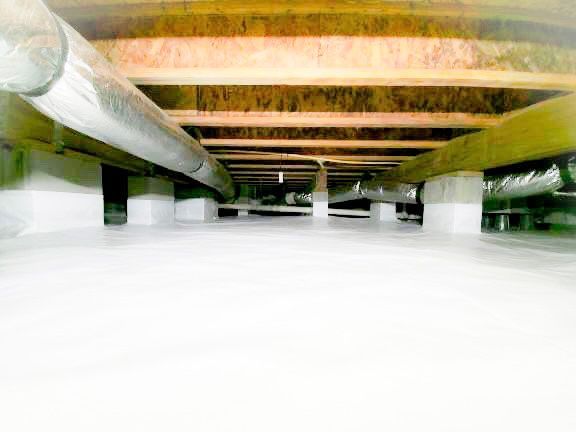
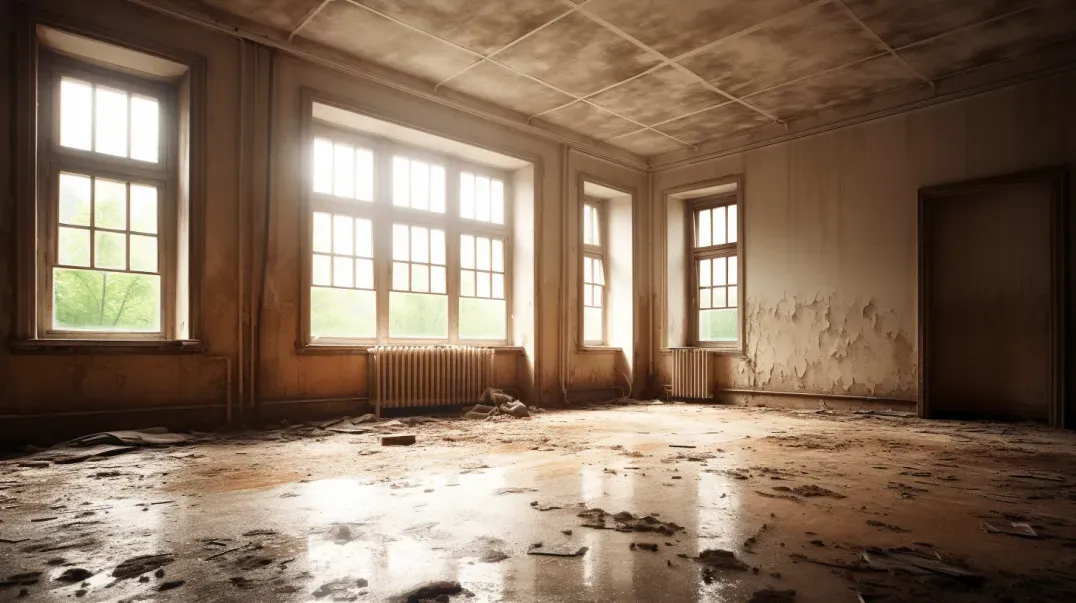
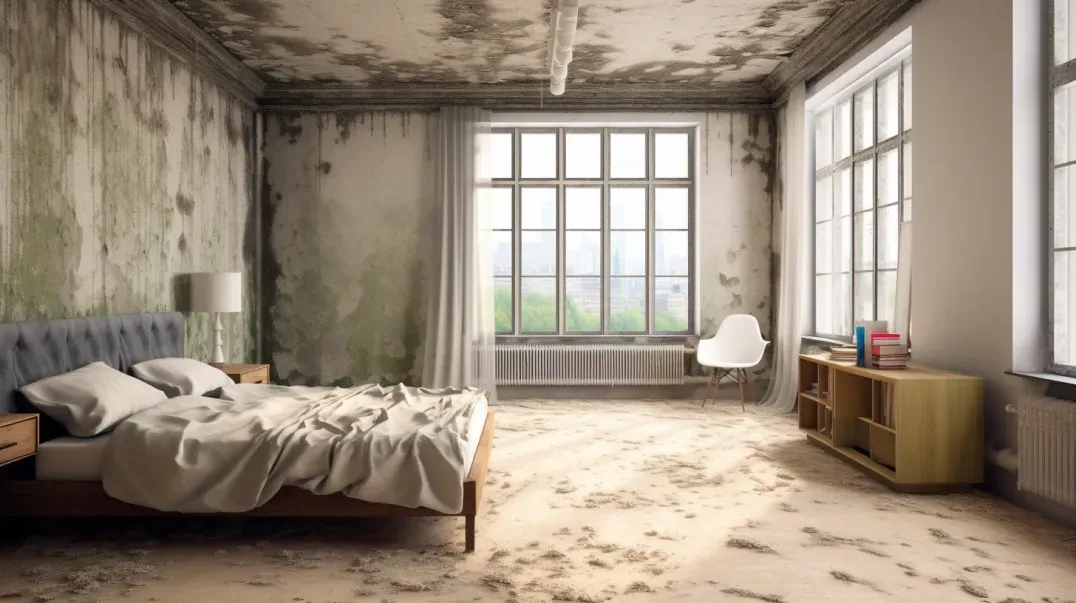
Schedule Your FREE Crawl Space Evaluation Today
There Is No Crawl Space Job We Can’t Fix!
SCHEDULE TODAY!
LET'S CORRECT YOUR CRAWL SPACE PROBLEMS!
Ready to protect and enhance your home with trusted crawl space and foundation solutions? Connect with Lowcountry Crawlspaces today! Our expert team is just a call or click away, ready to deliver top-notch service backed by industry-leading warranties. Don’t wait to improve your home’s safety and value—contact us now to schedule your free inspection and take the first step towards a healthier, more stable home environment
SCHEDULE TODAY!
LET'S CORRECT YOUR CRAWL SPACE PROBLEMS!
Ready to protect and enhance your home with trusted crawl space and foundation solutions? Connect with Lowcountry Crawlspaces today! Our expert team is just a call or click away, ready to deliver top-notch service backed by industry-leading warranties. Don’t wait to improve your home’s safety and value—contact us now to schedule your free inspection and take the first step towards a healthier, more stable home environment
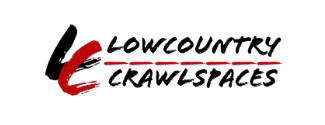
We offer the best quality crawl space moisture control and repair work out of anyone in the Lowcounty!
HOURS
SUNDAY: CLOSED
MONDAY: 9:00 AM - 5:00 PM
TUESDAY: 9:00 AM - 5:00 PM
WEDNESDAY: 9:00 AM - 5:00 PM
THURSDAY: 9:00 AM - 5:00 PM
FRIDAY: 9:00 AM - 5:00 PM
SATURDAY: CLOSED
All Rights Reserved | Lowcountry Crawlspaces



